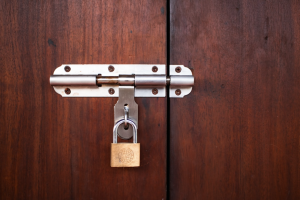Can Kids Get Lice from Dogs? An Expert Parent's Insight

As a parenting expert with over 15 years of experience and a mother of three, I've encountered my fair share of questions and concerns from fellow parents. One topic that often arises is the fear of children contracting lice from pets, especially dogs. Can kids get lice from dogs? The short answer is no, but let's delve deeper into the reasons why and dispel any lingering myths.
Understanding Lice and Their Hosts
Species-Specific Parasites
Lice are tiny, wingless insects that survive by feeding on the blood of their hosts. One crucial fact to understand is that lice are species-specific parasites. This means:
- Human lice are adapted to live and thrive on humans.
- Dog lice are adapted to live on dogs.
- The two cannot interchange hosts.
Types of Lice
Human Lice:
- Head Lice (Pediculus humanus capitis): Found on the scalp and hair.
- Body Lice (Pediculus humanus corporis): Live on clothing and move to the skin to feed.
- Pubic Lice (Pthirus pubis): Infest the pubic and genital areas.
Dog Lice:
- Trichodectes canis (Chewing Lice): Feed on skin debris.
- Linognathus setosus (Sucking Lice): Feed on the dog's blood.
Why Kids Can't Get Lice from Dogs
Biological Differences
- Blood Compatibility: Human lice need human blood to survive; dog lice need canine blood.
- Adaptation: Over millions of years, lice have evolved to specialize in their specific hosts.
Environmental Preferences
- Temperature and Habitat: Human lice prefer the warmth and environment of the human scalp.
- Physical Characteristics: Dog fur differs significantly from human hair, affecting lice mobility and attachment.
Evolutionary Specialization
- Lice have developed unique claws and feeding mechanisms suited to their host's hair or fur type and skin.
Common Misconceptions
Lice Transmission Between Species
It's a common myth that pets can transmit lice to humans and vice versa. However:
- Lice Cannot Jump or Fly: They spread through direct contact or sharing personal items.
- Species Barrier: The specialization of lice prevents cross-species infestation.
Hygiene and Lice Infestations
- Not a Sign of Uncleanliness: Lice infestations are not related to personal hygiene or cleanliness of the environment.
Symptoms to Watch For
In Children
- Itching: Especially on the scalp, neck, and behind the ears.
- Visible Nits or Lice: Tiny white eggs or small insects close to the scalp.
- Sensation of Movement: Feeling something crawling in the hair.
- Sleep Disturbances: Due to scalp irritation.
In Dogs
- Excessive Scratching: Particularly around the ears and neck.
- Hair Loss: Patches of missing fur.
- Visible Lice or Nits: Small insects or eggs attached to hair shafts.
- Anemia: In severe cases, especially in puppies.
A Word from Dalya Harel
Renowned lice expert Dalya Harel emphasizes the importance of understanding lice transmission:
"Parents often worry about their children getting lice from pets, but it's essential to know that dogs cannot transmit lice to humans. Each lice species is host-specific. For more detailed information on how lice affect dogs and the implications for pet owners, you can read more here."
Prevention and Treatment Strategies
For Children
Prevention
- Avoid Head-to-Head Contact: Especially during play with other children.
- Don't Share Personal Items: Such as combs, hats, headphones, or hair accessories.
- Regular Checks: Especially during school outbreaks.
Treatment
- Over-the-Counter Treatments: Shampoos and lotions specifically designed to eliminate lice.
- Prescription Medications: If OTC treatments are ineffective.
- Nit Comb: To remove lice and nits from the hair after treatment.
For Dogs
Prevention
- Regular Grooming: Brush and inspect your dog's coat frequently.
- Avoid Contact with Infested Animals: Keep your dog away from known infestations.
- Clean Environment: Wash bedding, toys, and collars regularly.
Treatment
- Veterinarian-Approved Products: Shampoos, sprays, and topical treatments designed for lice.
- Professional Grooming: Sometimes necessary for severe infestations.
- Isolation: Keep infested dogs away from other pets until treated.
When to Seek Professional Help
For Your Child
- Persistent Infestation: If lice persist after treatment.
- Skin Reactions: Severe itching, redness, or signs of infection.
- Professional Advice: Consult your pediatrician for guidance.
For Your Dog
- Severe Symptoms: Excessive scratching, hair loss, or signs of discomfort.
- Treatment Guidance: Your veterinarian can recommend the most effective treatments.
- Secondary Infections: Open sores or signs of skin infection require prompt attention.
Final Thoughts
Understanding that kids cannot get lice from dogs provides peace of mind and allows parents to focus on effective prevention and treatment strategies for both their children and pets. By recognizing the species-specific nature of lice and implementing proper hygiene practices, we can keep our families—and our furry friends—healthy and comfortable.
Key Takeaways
- Species-Specific Parasites: Human lice infest humans; dog lice infest dogs.
- No Cross-Transmission: Lice cannot be passed between humans and dogs.
- Preventative Measures: Regular checks and good hygiene help prevent infestations.
- Professional Guidance: Seek help if over-the-counter treatments aren't effective.
As a parent, staying informed empowers us to make the best decisions for our family's health. Remember, while lice can be a nuisance, they're manageable with the right knowledge and approach.






